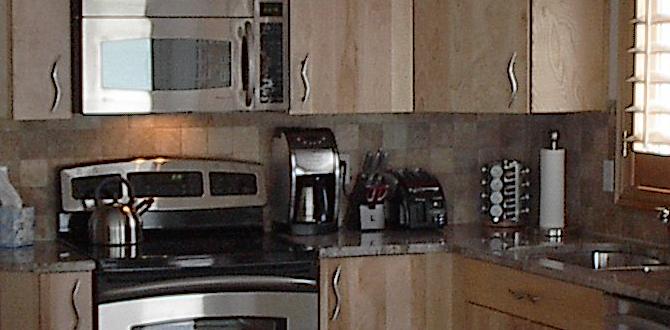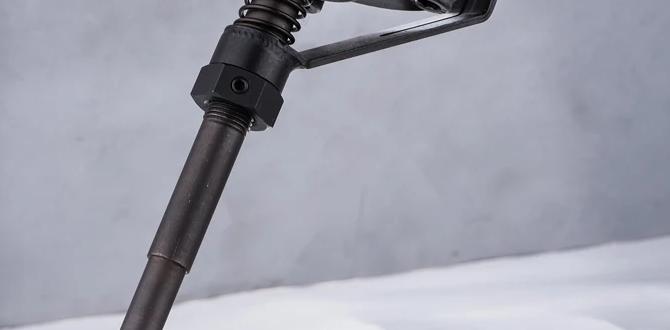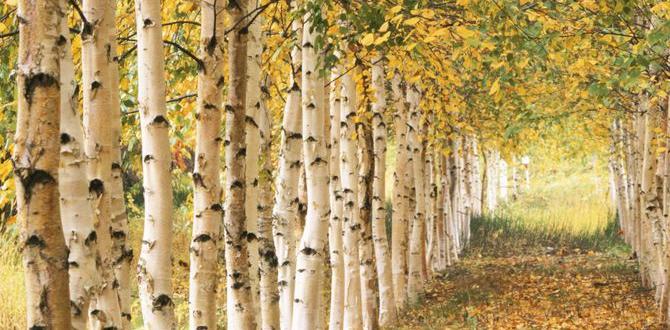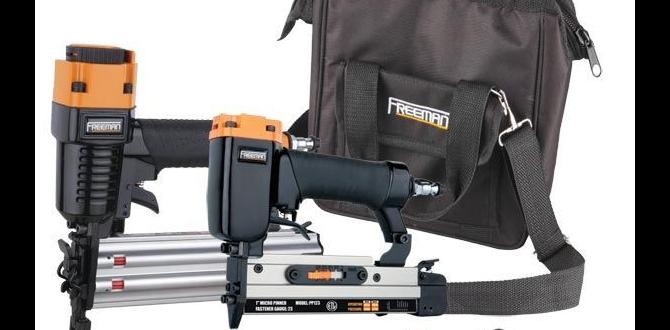Have you ever stepped into a room and felt instantly at home? The right flooring can do that. When it comes to choosing hardwood flooring, the options might seem endless. Dark, light, wide, or narrow—how do you pick the best one for your space?
Imagine hosting friends over for dinner. You look down at your beautiful new hardwood floor and feel proud. But how did you choose it? Did you think about durability? What about color or style? These choices matter a lot!
Surprisingly, hardwood flooring can even add value to your home. In fact, many buyers love homes with quality floors. It’s a factor that can make a big difference. So, what should you think about when you decide? Let’s explore the key points to help you choose hardwood flooring that suits your needs and style.
Table of Contents
Hardwood Flooring: How To Choose The Best Option For You
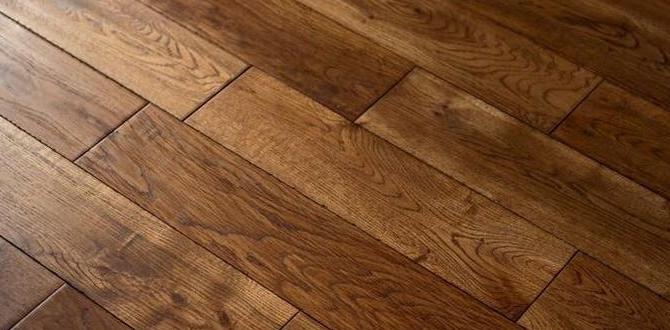
How to Choose Hardwood Flooring
Choosing hardwood flooring can feel overwhelming, but it doesn’t have to be. Start by considering the wood type. Oak? Maple? Each has unique features. Next, think about the finish. Do you want a glossy look or a more natural feel? Don’t forget to consider your lifestyle. Do you have kids or pets? Some finishes are more durable than others. Surprisingly, hardwood can last for generations. With the right choice, it can transform your space beautifully!Types of Hardwood Flooring
Solid Hardwood vs. Engineered Hardwood. Pros and Cons of Each Type.There are two main types of hardwood flooring: solid hardwood and engineered hardwood. Solid hardwood is made from a single piece of wood, making it strong and long-lasting. However, it can warp in humid areas, like your grandma’s greenhouse. Engineered hardwood, on the other hand, has layers of wood, helping it resist moisture. It’s like a superhero version of wood!
| Type | Pros | Cons |
|---|---|---|
| Solid Hardwood | Durable, can be refinished | Can warp, sensitive to humidity |
| Engineered Hardwood | Moisture-resistant, stable | Limited refinishing options |
In short, pick solid hardwood for strength and beauty. Choose engineered hardwood if you want something that laughs in humidity’s face. Remember, each type has its charm, so think about your needs!
Understanding Wood Species
Popular Choices: Oak, Maple, Cherry, and More. Hardness Ratings and Durability.Choosing the right wood species is key to your hardwood floor. Most people love oak for its strength and style. Maple is a favorite for its smooth look and durability. Then there’s cherry, which adds a warm touch to any room. Each type of wood has a different hardness. Here’s a fun fact: the Janka hardness rating tells you how tough the wood is. The tougher the wood, the more foot traffic it can handle without crying for help!
| Wood Species | Hardness Rating (Janka) | Durability |
|---|---|---|
| Oak | 1,290 | Very durable |
| Maple | 1,450 | High durability |
| Cherry | 950 | Moderate durability |
In short, remember to pick a wood that fits your lifestyle. If you have kids or pets, go for something like oak or maple. They can handle a bit of chaos!
Finishes and Aesthetics
Matte, Satin, and Gloss Finishes. Color and Grain Variations.Choosing the perfect finish can brighten up your hardwood flooring like a clown at a birthday party! Matte finishes are subtle and give a natural look. Satin gives a nice shine without being too flashy, making your floors look like they’re wearing a little makeup. Gloss finishes? They’re the divas, shiny and demanding attention!
Colors and grain show how unique your wood can be. Darker shades may add warmth, while lighter tones can make your space feel bigger. Remember, each wood type has its own pattern, making every plank a special snowflake!
| Finish Type | Description |
|---|---|
| Matte | Natural look, low shine. |
| Satin | Soft glow, easy to clean. |
| Gloss | Super shiny, catches the eye. |
In the great indoors, choose wisely! Flooring can change your whole room, like adding sprinkles to ice cream!
Room Compatibility
Best Woods for Different Areas (Living Room, Kitchen, etc.). Considerations for MoistureProne Areas.Choosing the right hardwood for each room is like picking the best superhero costume—it needs to fit the situation! For the living room, go for hard types like oak or maple. They are tough and look fantastic! In the kitchen, you might want something more water-resistant. Bamboo and hickory are excellent choices since they can handle spills without crying. Be cautious in moisture-prone areas, like basements—these rooms need a strong character. Generally, softer woods can warp. Here’s a quick look:
| Room | Best Woods | Notes |
|---|---|---|
| Living Room | Oak, Maple | Durable and stylish! |
| Kitchen | Bamboo, Hickory | Water-resistant heroes! |
| Bathroom | Teak, Walnut | Moisture warriors! |
When picking woods, remember: they need to shine for their room’s role! So, choose wisely, or your floors might just quit on you!
Budgeting for Your Hardwood Flooring
Average Costs Per Square Foot. Additional Expenses: Installation, Maintenance, and Repairs.Installing hardwood flooring is exciting, but it can make your wallet a little anxious. On average, hardwood flooring costs between $5 to $10 per square foot. This price can vary based on the type of wood you choose, kind of like picking between a burger and lobster dinner! But wait, there’s more! You’ll need to think about installation costs too, which can add an extra $3 to $8 per square foot. Don’t forget maintenance and repairs; they can sneak up like a cat on a laser dot. Be sure to budget wisely!
| Cost Type | Average Cost |
|---|---|
| Hardwood Flooring | $5 – $10 per sq. ft. |
| Installation | $3 – $8 per sq. ft. |
So, make a plan before you shop! It’s better than finding out your budget is smaller than your shoe size!
Environmental Considerations
Sustainable Sourcing and Certification Standards. Impact of Hardwood Flooring on Home Value.Choosing hardwood flooring is not just about looks. Sustainable sourcing is important. Sourcing wood responsibly helps protect our forests. Look for certification standards like FSC or PEFC. These ensure the wood comes from well-managed forests. Think about how your flooring choice impacts home value, too. Hardwood flooring can boost your home’s worth if it’s eco-friendly and stylish. Buyers love homes that have environmentally friendly features.
Consider these points:
- Sustainable sources protect nature.
- Certification shows quality and trust.
- Eco-friendly flooring can raise home value.
What are the different certification standards?
FSC (Forest Stewardship Council) and PEFC (Program for the Endorsement of Forest Certification) are top certifications to look for when choosing hardwood flooring.
Installation Methods
Nail Down vs. Glue Down vs. Floating Installation. DIY vs. Hiring a Professional Installer.There are three main ways to install hardwood flooring: nail down, glue down, and floating. Nail down uses nails to hold the boards to the floor. It’s strong but takes time. Glue down uses glue for a smooth finish, great for concrete. Floating means the boards fit together but aren’t attached to the floor. It’s easy and good for DIY projects. You can choose to do it yourself or hire a pro. Hiring helps if you want a perfect look.
What is the best installation method?
The best method depends on your needs. For strong floors, use nail down or glue down. For easy and quick work, floating is great. Think about your skills and if you want help.
- Nail Down: Best for strong floors.
- Glue Down: Great for concrete.
- Floating: Easy for DIY.
Maintenance Tips for Longevity
Cleaning Regimen and Products to Use. Common Issues and How to Prevent Them.Taking care of your hardwood floor is like giving it a warm hug every day! Start by sweeping or vacuuming regularly to collect dirt. Use a damp mop with a safe cleaner—no soap or vinegar! Surprise, they can harm the wood. To keep those pesky scratches away, avoid dragging furniture. Use felt pads instead!
| Common Issues | Prevention Tips |
|---|---|
| Scratches | Use felt pads under furniture. |
| Dirt buildup | Regularly sweep and mop. |
With these tips, your floor can last longer than your favorite pair of socks—well, almost! Keep them cozy and clean, and they’ll shine bright for years.
Conclusion
In conclusion, choosing hardwood flooring involves considering your budget, style, and maintenance. Think about where you’ll install it, like in high-traffic areas or bedrooms. Remember to look at wood types and finishes. By researching your options, you can find the perfect fit for your home. Keep exploring and gather samples to see what you like best!FAQs
What Factors Should I Consider When Selecting The Type Of Hardwood For My Flooring?When choosing hardwood for your floor, think about how much traffic your home gets. If you have pets or kids, you’ll want a strong wood. Also, consider the color and style that looks best in your room. Lastly, check your budget. Some woods cost more than others, so find a type that fits your money plan!
How Do Different Finishes And Grades Of Hardwood Affect Durability And Appearance?Different finishes and grades of hardwood can change how strong and pretty the wood looks. A smooth finish can make it shine and look nice, while a rough finish can look more natural. Higher grades of wood usually have fewer knots and imperfections, making them look better. Stronger finishes protect the wood from scratches and water, making it last longer.
What Are The Advantages And Disadvantages Of Engineered Hardwood Versus Solid Hardwood Flooring?Engineered hardwood is made of thin layers of wood glued together, while solid hardwood is one solid piece of wood. One advantage of engineered hardwood is that it can handle changes in humidity better than solid hardwood. This means it won’t warp easily. However, solid hardwood can be sanded and refinished many times, making it last longer. In the end, you might choose engineered for its flexibility or solid for its long-lasting strength.
How Can I Determine The Right Wood Species For My Lifestyle And Home Environment?To find the right wood for your home, think about how you live. Do you have kids or pets? Some woods scratch easily. Do you want a light or dark color? Look for wood that matches your space. Lastly, check if the wood needs a lot of care or just a little.
What Is The Best Way To Match Hardwood Flooring With My Existing Home Décor And Furniture?To match hardwood flooring with your home décor and furniture, first look at the colors in your rooms. You can choose a wood color that is light, dark, or in the middle. Next, think about the style of your furniture. If your furniture is modern, a smooth, sleek wood works best. If you have lots of cozy items, a warmer, rustic color will fit perfectly. Finally, try to pick a wood that makes you feel happy in your space.
{“@context”:”https://schema.org”,”@type”: “FAQPage”,”mainEntity”:[{“@type”: “Question”,”name”: “What Factors Should I Consider When Selecting The Type Of Hardwood For My Flooring? “,”acceptedAnswer”: {“@type”: “Answer”,”text”: “When choosing hardwood for your floor, think about how much traffic your home gets. If you have pets or kids, you’ll want a strong wood. Also, consider the color and style that looks best in your room. Lastly, check your budget. Some woods cost more than others, so find a type that fits your money plan!”}},{“@type”: “Question”,”name”: “How Do Different Finishes And Grades Of Hardwood Affect Durability And Appearance? “,”acceptedAnswer”: {“@type”: “Answer”,”text”: “Different finishes and grades of hardwood can change how strong and pretty the wood looks. A smooth finish can make it shine and look nice, while a rough finish can look more natural. Higher grades of wood usually have fewer knots and imperfections, making them look better. Stronger finishes protect the wood from scratches and water, making it last longer.”}},{“@type”: “Question”,”name”: “What Are The Advantages And Disadvantages Of Engineered Hardwood Versus Solid Hardwood Flooring? “,”acceptedAnswer”: {“@type”: “Answer”,”text”: “Engineered hardwood is made of thin layers of wood glued together, while solid hardwood is one solid piece of wood. One advantage of engineered hardwood is that it can handle changes in humidity better than solid hardwood. This means it won’t warp easily. However, solid hardwood can be sanded and refinished many times, making it last longer. In the end, you might choose engineered for its flexibility or solid for its long-lasting strength.”}},{“@type”: “Question”,”name”: “How Can I Determine The Right Wood Species For My Lifestyle And Home Environment? “,”acceptedAnswer”: {“@type”: “Answer”,”text”: “To find the right wood for your home, think about how you live. Do you have kids or pets? Some woods scratch easily. Do you want a light or dark color? Look for wood that matches your space. Lastly, check if the wood needs a lot of care or just a little.”}},{“@type”: “Question”,”name”: “What Is The Best Way To Match Hardwood Flooring With My Existing Home Décor And Furniture? “,”acceptedAnswer”: {“@type”: “Answer”,”text”: “To match hardwood flooring with your home décor and furniture, first look at the colors in your rooms. You can choose a wood color that is light, dark, or in the middle. Next, think about the style of your furniture. If your furniture is modern, a smooth, sleek wood works best. If you have lots of cozy items, a warmer, rustic color will fit perfectly. Finally, try to pick a wood that makes you feel happy in your space.”}}]}